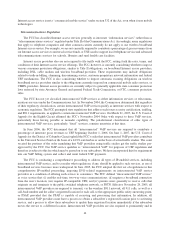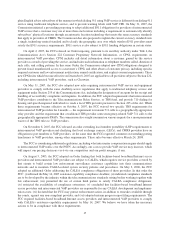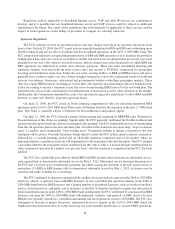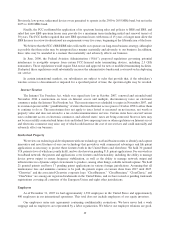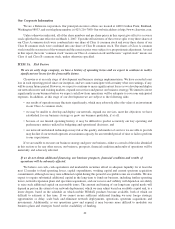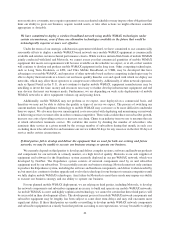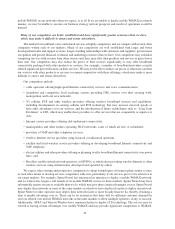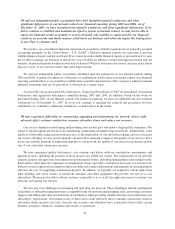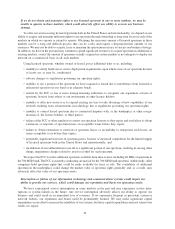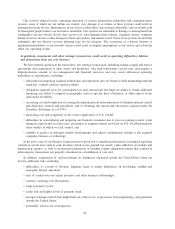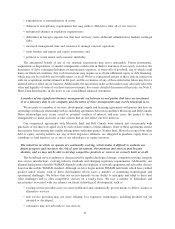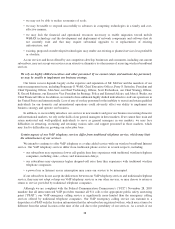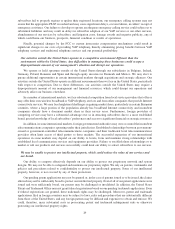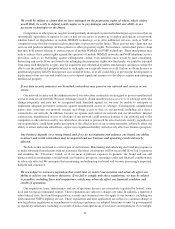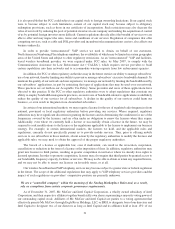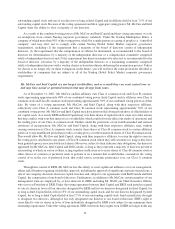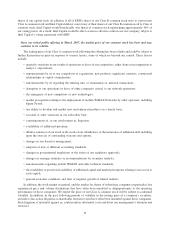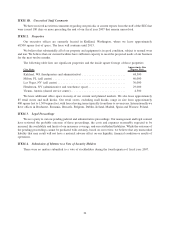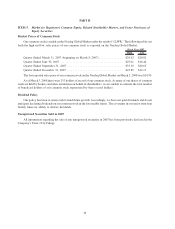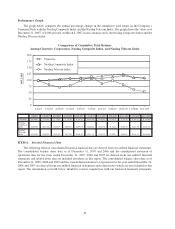Clearwire 2007 Annual Report Download - page 34
Download and view the complete annual report
Please find page 34 of the 2007 Clearwire annual report below. You can navigate through the pages in the report by either clicking on the pages listed below, or by using the keyword search tool below to find specific information within the annual report.Our services depend on the continuing operation of various information technology and communications
systems, some of which are not within our control. Any damage to or failure of these systems could result in
interruptions in our service. Interruptions in our service could reduce our revenues and profits, and our brand could
be damaged if people believe our network is unreliable. Our systems are vulnerable to damage or interruption from
earthquakes, terrorist attacks, floods, fires, power loss, telecommunications failures, computer viruses, computer
denial of service attacks or other attempts to harm our systems, and similar events. Some of our systems are not fully
redundant, and our disaster recovery planning may not be adequate. The occurrence of a natural disaster or
unanticipated problems at our network centers could result in lengthy interruptions in our service and adversely
affect our operating results.
Acquisitions, investments and other strategic transactions could result in operating difficulties, dilution
and distractions from our core business.
We have entered, and may in the future enter, into strategic transactions, including strategic supply and service
agreements and acquisitions of other assets and businesses. Any such transactions can be risky, may require a
disproportionate amount of our management and financial resources and may create unforeseen operating
difficulties or expenditures, including:
• difficulties in integrating acquired technologies and operations into our business while maintaining uniform
standards, controls, policies and procedures;
• obligations imposed on us by counterparties in such transactions that limit our ability to obtain additional
financing, our ability to compete in geographic areas or specific lines of business, or other aspects of our
operational flexibility;
• increasing cost and complexity of assuring the implementation and maintenance of adequate internal control
and disclosure controls and procedures, and of obtaining the reports and attestations required under the
Securities Exchange Act of 1934;
• Increasing cost and complexity in the correct application of U.S. GAAP;
• difficulties in consolidating and preparing our financial statements due to poor accounting records, weak
financial controls and, in some cases, procedures at acquired entities not based on U.S. GAAP particularly
those entities in which we lack control; and
• inability to predict or anticipate market developments and capital commitments relating to the acquired
company, business or technology.
In the past, some of our business acquisitions have given rise to significant deficiencies in financial reporting
controls in certain areas such as cash, inventory, fixed assets, prepaid site rentals, value-added tax receivables and
depreciation expense, as well as inconsistent preparation of monthly routine elimination entries that resulted in
intercompany transactions not properly eliminated in consolidation at year end.
In addition, acquisitions of, and investments in, businesses organized outside the United States often can
involve additional risks, including:
• difficulties, as a result of distance, language, legal or culture differences, in developing, staffing and
managing foreign operations;
• lack of control over our equity investees and other business relationships;
• currency exchange rate fluctuations;
• longer payment cycles;
• credit risk and higher levels of payment fraud;
• foreign exchange controls that might limit our control over, or prevent us from repatriating, cash generated
outside the United States;
• potentially adverse tax consequences;
26


